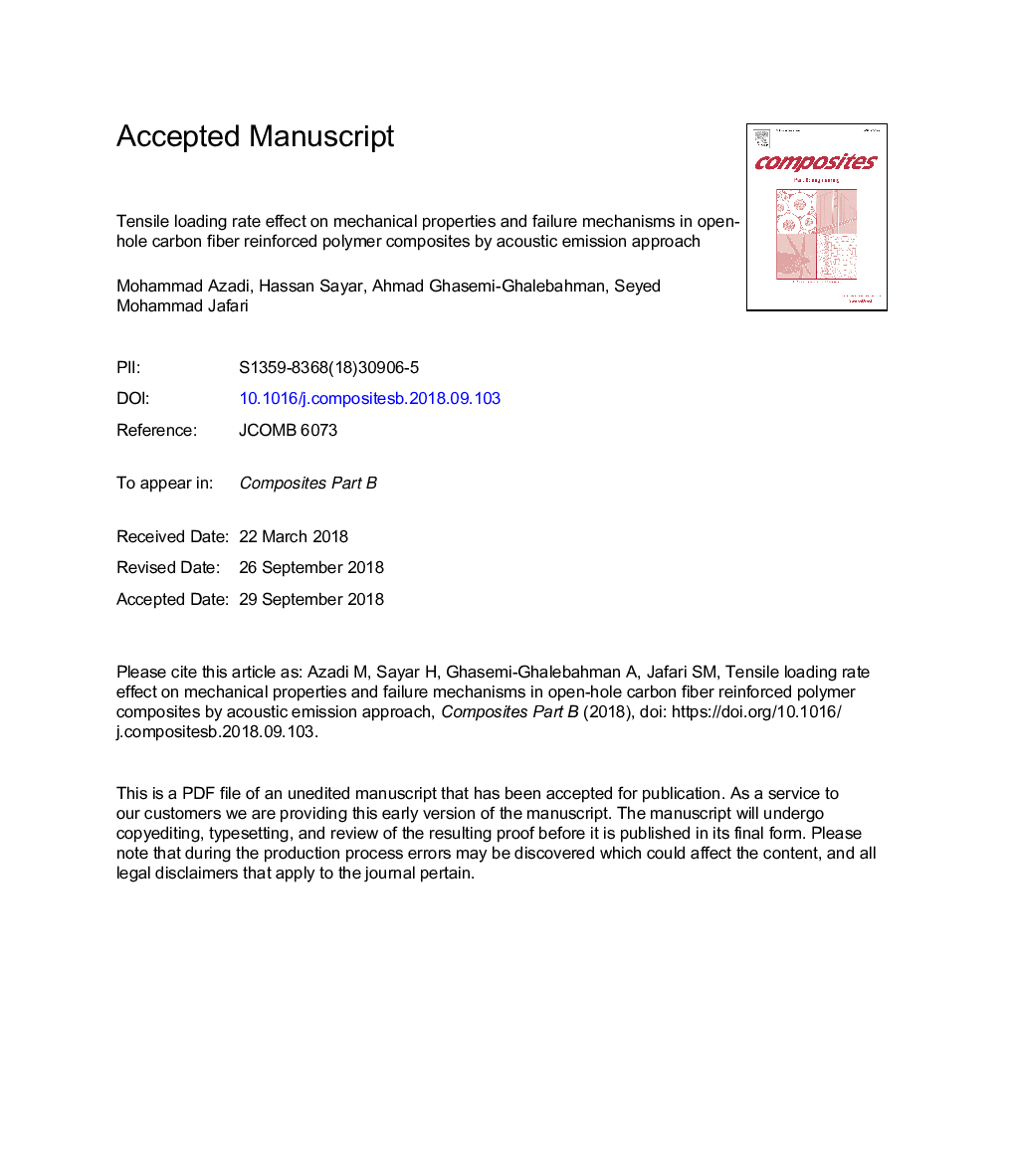| Article ID | Journal | Published Year | Pages | File Type |
|---|---|---|---|---|
| 11020727 | Composites Part B: Engineering | 2019 | 37 Pages |
Abstract
In this article, the effect of the tensile loading rate has been investigated on mechanical properties and failure mechanisms in open-hole carbon fiber reinforced polymer composites. For this objective, acoustic emission signals on standard specimens under tensile loading were acquired and analyzed by the wavelet packet transform (WPT) and the fuzzy C-Means (FCM) methods. Tensile tests were also performed on pure resin, pure fiber and composite samples, at different loading rates. Obtained results showed that by increasing the tensile loading rate, the maximum stress increased and the maximum strain decreased, in open-hole composite specimens. The frequency range of failure mechanisms including matrix cracking, the fiber breakage and debonding of fibers from the matrix was 100-250â¯kHz, 420-500â¯kHz and 250-420â¯kHz, respectively. In addition, debonding was the dominant failure mechanism in both WPT and FCM methods. Such results were also verified by scanning electron microscopy images.
Keywords
Related Topics
Physical Sciences and Engineering
Engineering
Engineering (General)
Authors
Mohammad Azadi, Hassan Sayar, Ahmad Ghasemi-Ghalebahman, Seyed Mohammad Jafari,
